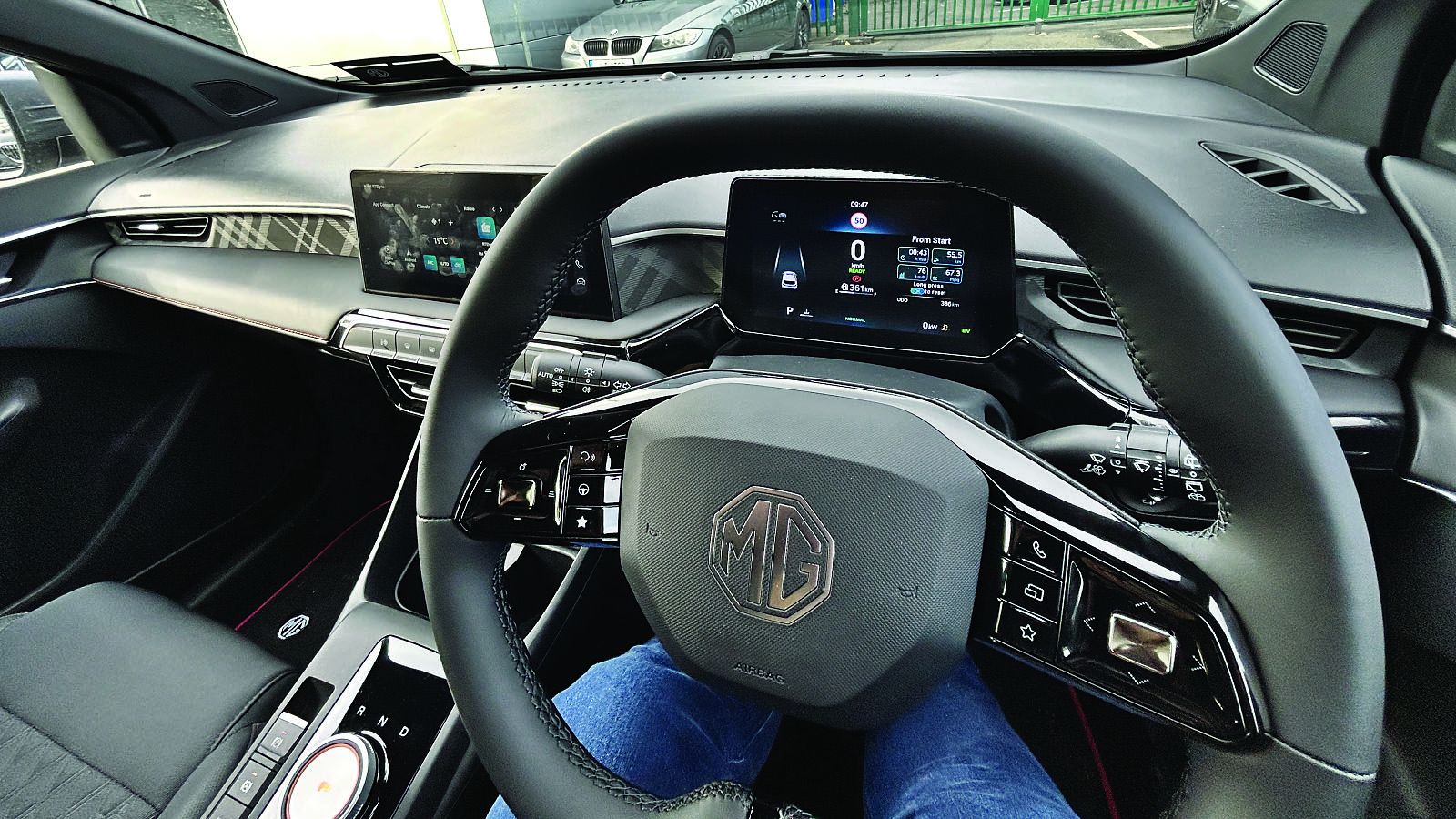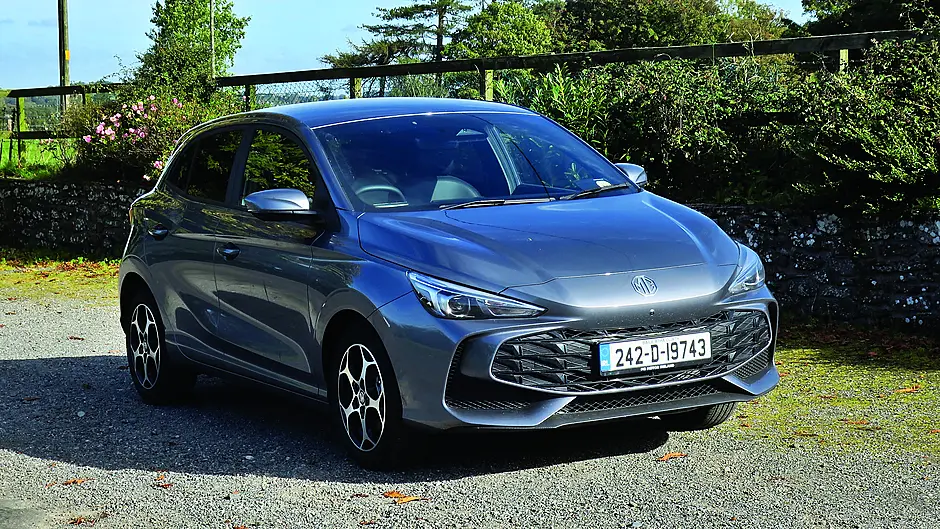
BY BRIAN BYRNE
I REMEMBER the first time I saw a Chinese SUV at a European motor show. So forgettable that I can’t remember the year or the car brand. Or even at which of the three shows I regularly attended it was exhibited.
But I do remember the unattractiveness of the materials and interior design, and the very iffy build quality compared to what we were even then used to from European carmakers. ‘Won’t work here,’ I said to a colleague then.
It didn’t.
But China learns quickly. Anyone in the last few years who has investigated the new cars from a variety of the Asian giant’s carmakers will have been struck by the quality and the luxury intent of their higher-end cars.
As well as in the originally European brands now owned by Chinese companies, such as Volvo. All have the tech, the style, and the quality.
None more so than MG Motor, the current iteration of the 1924-founded British sports car marque owned today by the Shanghai car giant SAIC Motor. This is China targeting not the luxury market, but the everyday mainstream. In 2013, some 513 Chinese MG cars were sold in Europe.
Last year, a decade later, that figure hit 231,684 units.

Much of that success has come from demand for the MG4 electric car, but now the MG3 Hybrid+ has arrived. ‘This will certainly work here,’ I said to that same colleague last week.
The B segment car is a tad larger than the now discontinued Ford Fiesta and the latest Suzuki Swift. It has an attractively lively design at the front, some good side sculpting, and a safe rear hatch style made distinctive by a large MG badge.
Where the model really scores is with the interior, featuring a tidily styled dashboard with separate infotainment and driver information screens, both well located and with intelligible graphics.
The touchscreen seems to be a generation better than I remember in the MG4 EV I drove last year, which was poor.
Underneath is a line of physical switches for some climate control and radio volume.
Apple CarPlay had to be wire-connected, and created an issue that the switch to access the climate detail page, and I had to exit CarPlay to do anything with heat or cool.
The hybrid powertrain means automatic, and transmission selection is via a big knob on the centre console. Visible and virtually impossible to do anything incorrectly, I like it.
The hexagonal steering wheel feels good, though the remote toggles for navigating functions are not as clear as some. China will learn.
It’s what we used to call the supermini segment, so in reality a four-seater hatchback with room for an occasional fifth as long as all in the back are children. But every seat is comfortable. And everything looks good and feels solid. China has learned.
The hybrid powertrain is new to the brand, and in my experience with the car it works well. A larger-than-usual electric drive battery for the segment means a significant amount of town driving is done electrically.

There’s a three-speed automatic rather than a CVT auto transmission, and when the 1.5 inline four cuts in, it does seem to be revving high, possibly because the Atkinson cycle it’s set up for is more efficient for hybrids.
No rev-counter, so I couldn’t see visually what was happening. But the overall drive in whatever mode the system chose was good.
An eight-second sprint to 100km/h is claimed, and without measuring that there was certainly a decent sense of push when accelerating to pass.
I averaged 4.5L/100km through my time, and that’s a decent economy.
All driver assist is part of the package, and the annoying alerts that we’re all starting not to heed – I won’t go there.
This car is going to do very well, everywhere.
Especially priced as it is before that extra EU duty on Chinese-made cars arrives.
The verdict:
What I liked: China has learned.
Price: From €23,995






